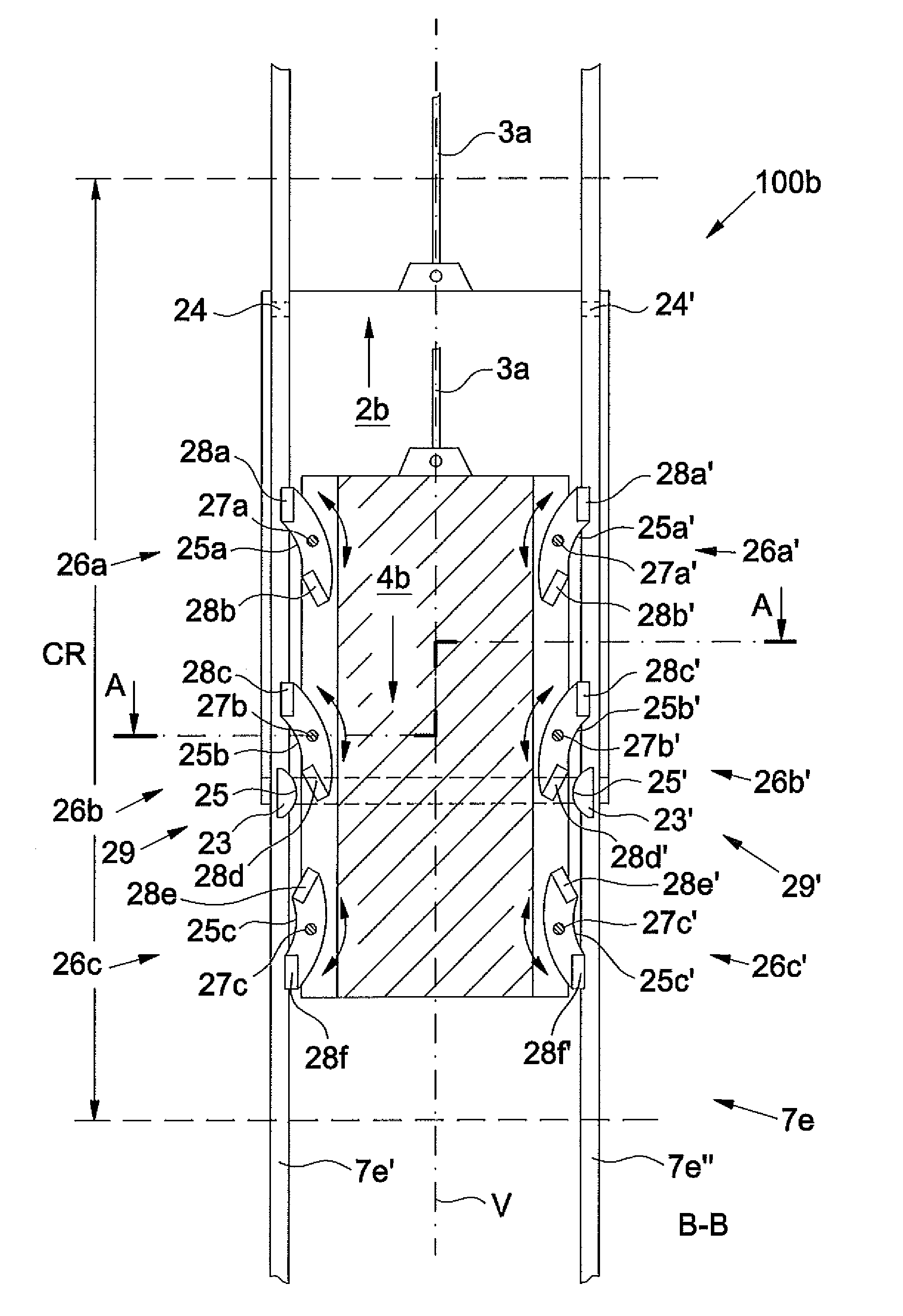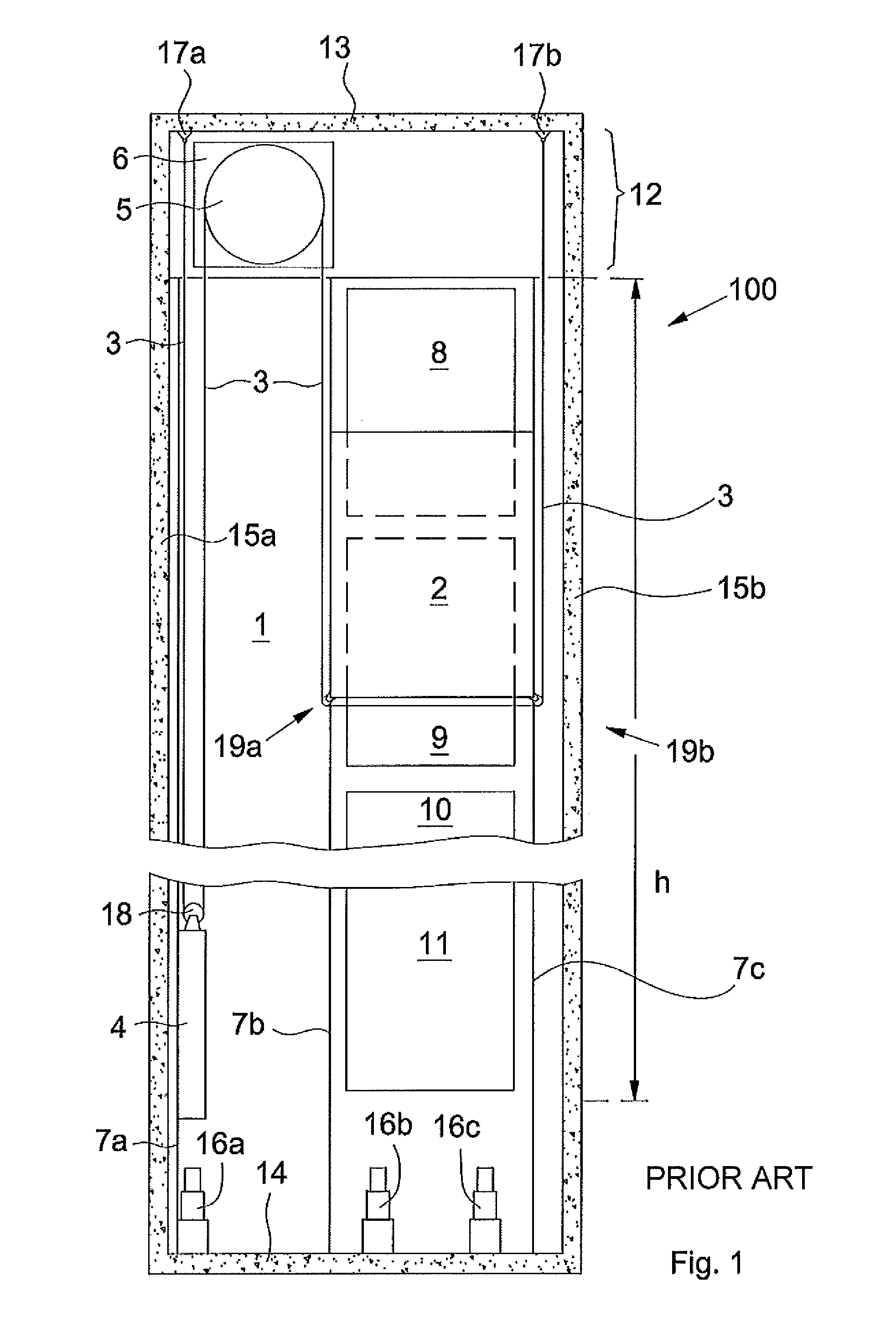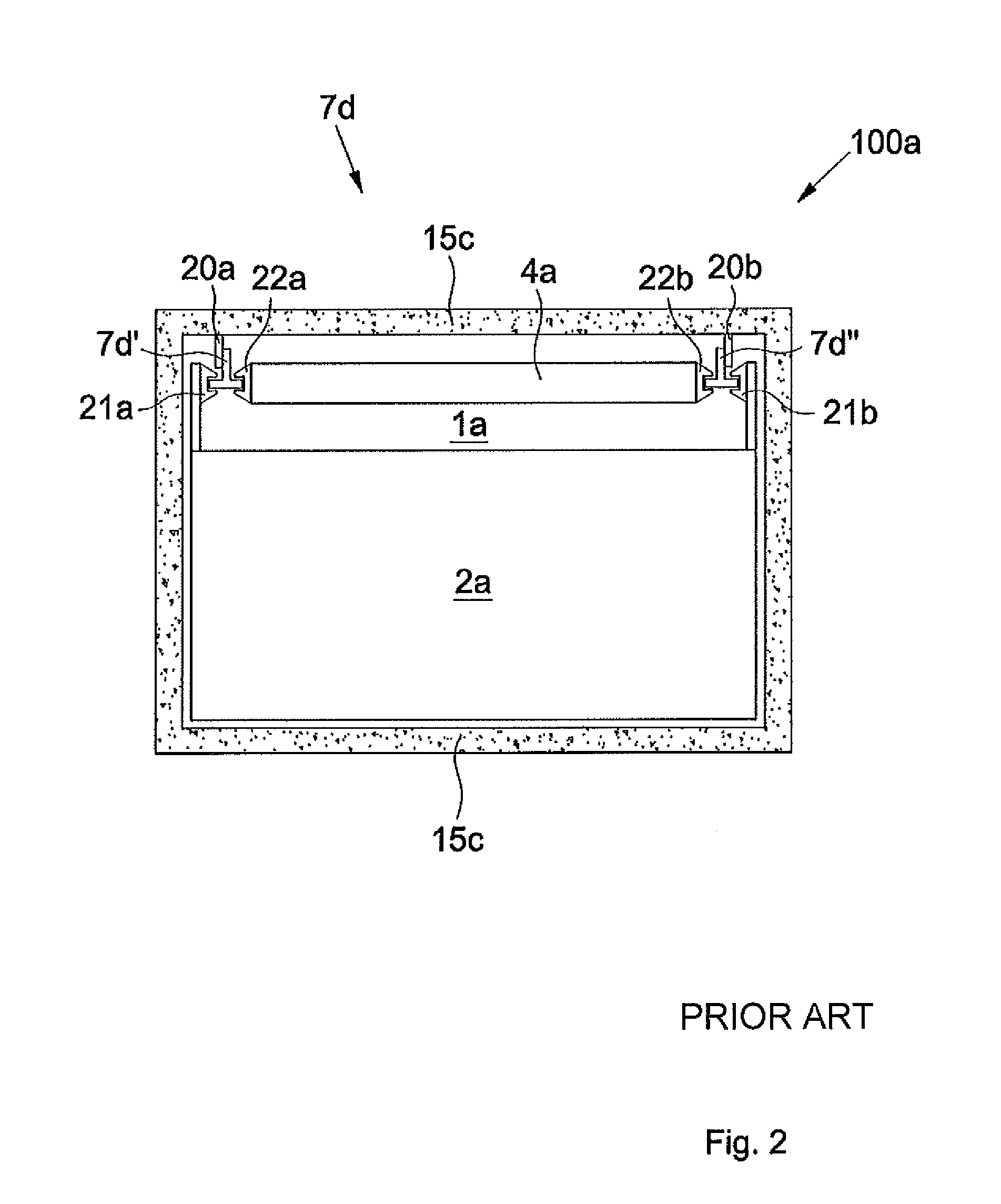Elevator guide rail system
a technology of guide rails and elevators, which is applied in the direction of elevators, transportation and packaging, building lifts, etc., can solve the problems of considerable cost and the necessity of two guide rails, and achieve the effect of cost saving
- Summary
- Abstract
- Description
- Claims
- Application Information
AI Technical Summary
Benefits of technology
Problems solved by technology
Method used
Image
Examples
first embodiment
[0041]FIG. 3 shows an elevator system 100b according to the present technologies, in which an elevator car 2b and a counterweight 4b use a common pair of guide rails 7e, constituted of a first guide rail 7e′ and a second guide rail 7e″. The counterweight 4b and the elevator car 2b are supported by a suspending and driving means 3a. The elevator car 2b runs along the guide rail 7e′ with a guide shoe 23 and with a freely supported roller 24 and along the opposite guide rail 7e″ with a guide shoe 23′ and a freely supported roller 24′. The guide shoes 23 and 23′ define a contact surface 25 and 25′, respectively, capable of reciprocal contact with contact surfaces 25a-25c and 25a′-25c′ of switchable guiding elements 26a-26c and 26a′-26c′, respectively. Each of the guiding elements 26a-26c and 26a′-26c′ show an upper guide 28a, 28c, 28e, 28a′, 28c′, 28e′ and a corresponding lower guide 28b, 28d, 28f, 28b′, 28d′, 28f′, respectively. The guide shoe 23 of the elevator car 2b with its contact...
fourth embodiment
[0059]FIG. 6 shows an elevator system 100e according to the present technologies, with two deflecting elements 29e′ and 29f′ in the shape of a deflecting rail 37′ for a counterweight 4e. Both the counterweight 4e and an elevator car 2e are supported by a suspending and driving means 3d, whereas the elevator car 2e and the counterweight 4e share beyond a crossing region CR3 the same pair of guide rails 7h, of which the illustrated lateral and sectional view shows only a guide rail 7h″ laying in the back. The elevator car 2e is shown while running with guide shoes 23e′ and 23f′ along a guide rail 71″, which is within the crossing region CR3, as well as beyond it, straight. The counterweight 4e has several weight parts 40a-40d, linked possibly by pivotable jointed links 41a-41c, and is shown while entering the deflecting rail 37′. Each of the weight parts 40a-40d is guided by two guiding elements 39a′-39h′. Both the deflecting rail 37′ and the straight guide rails 7h″ and 71″ show guid...
PUM
 Login to View More
Login to View More Abstract
Description
Claims
Application Information
 Login to View More
Login to View More - R&D
- Intellectual Property
- Life Sciences
- Materials
- Tech Scout
- Unparalleled Data Quality
- Higher Quality Content
- 60% Fewer Hallucinations
Browse by: Latest US Patents, China's latest patents, Technical Efficacy Thesaurus, Application Domain, Technology Topic, Popular Technical Reports.
© 2025 PatSnap. All rights reserved.Legal|Privacy policy|Modern Slavery Act Transparency Statement|Sitemap|About US| Contact US: help@patsnap.com



